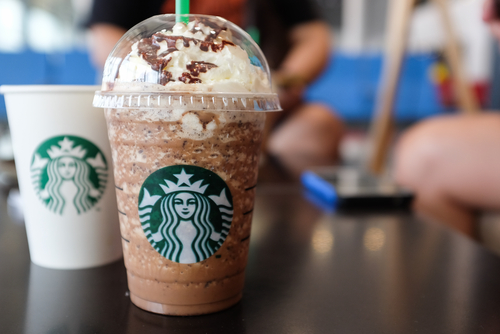Starbucks Is Closing 150 Underperforming U.S. Locations. Here’s Why.
Starbucks, the world’s largest coffee chain, will close 150 underperforming U.S locations in fiscal year 2019. That’s about three times its historical average, and the news comes just before executive chairman and co-founder Howard Schultz plans to step away from his role in the company on June 26.
Starbucks hasn’t met experts’ estimates for same-store sales in the Americas for five of the last six quarters, and the chain is struggling with potentially too many U.S. stores — projecting same-store sales growth of just 1 percent for Q3 2018. Most of the impending closings should affect “underperforming stores in densely populated urban areas,” the company said in a statement to Entrepreneur.
On a Tuesday earnings call, Johnson mentioned the company’s recent decision to close 8,000 stores for an afternoon of racial bias training in connection with the projected 1 percent growth rate, adding that it’s “not an excuse.” In April, public outcry spurred from a Starbucks employee calling the police on two black men waiting in the store for a business meeting, leading to their arrests.
“Our recent performance does not reflect the potential of our exceptional brand and is not acceptable,” said president and CEO Kevin Johnson in a statement. “We must move faster to address the more rapidly changing preferences and needs of our customers.”
An increasing amount of research suggests those preferences are for healthier food and beverage choices. In fact, 67 percent of Americans said they would prioritize healthy or socially-conscious food purchases in 2018 — and nearly half of consumers plan to eat less sugar or purchase more products with “no sugar added,” according to Label Insight, a big data company focusing on food labels.
When it comes to ingredients, seven in 10 consumers say they’re concerned with what’s not in their food — and they’re paying more attention to products free from “undesirable ingredients” like artificial colors, hydrogenated oils and parabens, according to Nielsen, a global information company that studies consumer habits.
Starbucks’s newest menu item takes those trends into account. The company advertises its Mango Dragonfruit Refresher, released Tuesday, as free of artificial colors or sweeteners. At fewer than 100 calories, the beverage — made from freeze-dried dragonfruit and green coffee extract — ranks in at fewer than 100 calories. This could help minimize the effect of Starbucks’s Frappucino sales falling 3 percent so far in 2018.
As for the chain’s other future plans? It aims to shore up its digital efforts and accelerate growth next year in under-penetrated markets in the U.S. and, potentially, abroad. China, where Starbucks reportedly opens a new store about every 15 hours, is currently its most significant growth driver.

